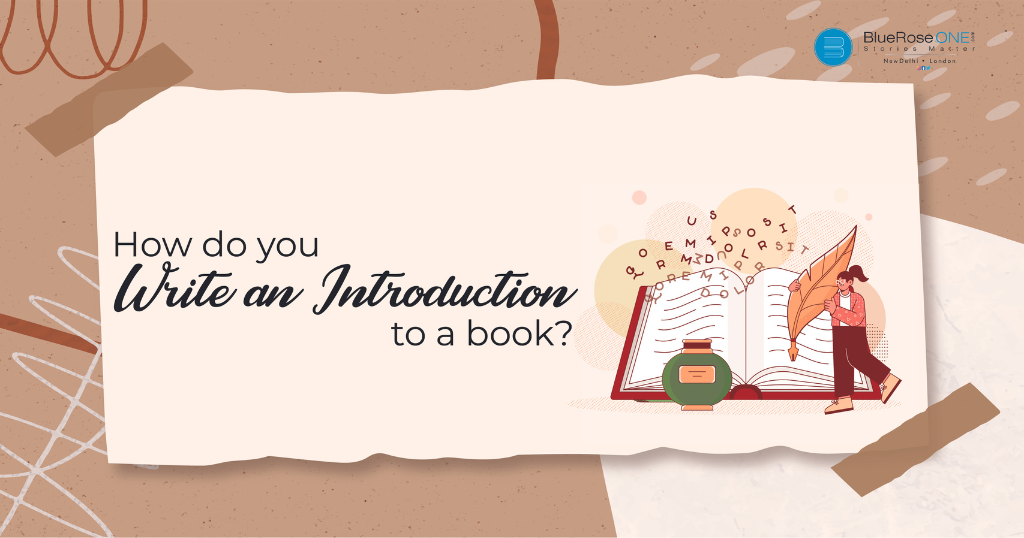
How to Write an Engaging Introduction for Your Book: Tips and Examples
The book’s introduction is your literary handshake with the reader; it’s like a blind date set up by an unknown entity—your chance to make a lasting first impression. It acts as a portal into the world you’ve built, inviting readers to enter and embark on the adventure you’ve designed. Read: 15 Easy Hacks to Inspire Yourself to Write a Book and Get it Published Easily But how can you write an opening that captivates your audience while also setting the tone for the rest of the story? In this article, we’ll look at the art of introduction writing, present examples, and address frequently asked questions to help you write an introduction that will leave an impression on your readers. What is an introduction to a book? Before delving into the intricacies of writing a compelling book introduction, let’s define what it is. An introduction in a book serves several crucial purposes: You may also like: How to Design a Book Back Cover in 5 Simple Steps How Do You Start a Good Introduction for a Book? You may also like: How to Publish My Book | Self Publish Your Book | BlueRoseOne How Do You Introduce a Book in a Paragraph? A concise yet impactful introduction can often be encapsulated in a single paragraph. Here’s an example of an introductory paragraph: “A shadowy figure emerges from the fog in the dimly lit streets of Victorian London, shrouded in mystery and driven by an insatiable thirst for justice.” This is the world of ‘The Enigmatic Detective,’ where danger lurks around every corner. We’ll uncover the mysteries of a city beset by crime and corruption as we dig into the life of Detective Alexander Blackwood. But there is a deeper mystery behind the gaslit lanes and cobblestone streets—the enigma of the investigator himself.” This paragraph performs three important introduction tasks: it establishes the setting (Victorian London), introduces the primary character (Detective Alexander Blackwood), develops conflict (crime and corruption), and generates interest (the detective’s riddle). You may also like: Fatal Flaw: Definition, Types, Example and More What is an Introduction to a Book for Kids? Introductions for children’s books should be engaging and age-appropriate. Consider using vibrant imagery, playful language, and relatable characters to draw young readers into the story. Here’s an example from a children’s book: “Once upon a time in a not-too-distant land, there lived a curious little squirrel named Sammy.” Sammy’s fluffy tail wiggled with delight as he embarked on a journey unlike any other. Join Sammy as he explores the enchanted forest, makes new friends, and sets out on a journey to defend his home from a nefarious gnome.” The opening in this example introduces the main character (Sammy the squirrel), the environment (an enchanted woodland), and teases the adventure and difficulty Sammy will experience. You may also like: How to Publish a Book? | Publish Your Book | BlueRoseOne Is the preface and introduction the same? No, the preface and introduction are not the same. They serve different purposes in a book: You may also read: Scion of Ikshvaku by Amish Tripathi: Book Review What is another word for the introduction of a book? While “introduction” is the most common term, you may also come across these synonyms or related terms: What is the introduction section of a book? The introductory portion of a book includes the first few pages or chapters that act as the introduction to the tale. Depending on the intricacy of the book, it might range from a single introduction paragraph to multiple chapters. This part lays the groundwork for the story, introduces characters or themes, and entices readers to keep reading. Read: Learn How to Publish Mystery Novels: A Complete Fiction Genre Guide In its simplest form, crafting an engaging start for your book entails developing a hook, setting the scene, introducing characters or themes, and creating curiosity. It’s your chance to establish a lasting first impression and inspire readers to go further into your creative universe. Whether you’re writing a novel, a nonfiction piece, or a children’s book, mastering this technique may enhance your narrative and link you with your audience from the start.

The Pulitzer Prize Awards: Honouring Excellence in Journalism and the Arts
The Pulitzer Prize award are recognised as a mark of brilliance and success in journalism, literature, and the arts. These distinguished honours, which were established in 1917, have a rich history, a noble motto, and a deep effect on the worlds of journalism, literature, and the arts. Read: Instagram Book Marketing: 7 Steps on How to Promote Your Book on Instagram In this blog, we will look at the history, motto, and impact of the Pulitzer Prizes, as well as their importance in identifying and recognising extraordinary contributions to society, as well as the winners of 2024 who shone in the world of literature. The History of the Pulitzer Prize Awards Joseph Pulitzer, a Hungarian-American writer, publisher, and philanthropist, created the Pulitzer Prizes. Joseph Pulitzer was a notable figure in American journalism in the late nineteenth and early twentieth centuries, recognised for his commitment to investigative reporting and role in developing contemporary journalism. Pulitzer was the publisher of two large newspapers, the New York World and the St. Louis Post-Dispatch, and he was a firm believer in the power of the press to shape public opinion and effect good change. He bequeathed cash in his will to establish the Columbia School of Journalism and the Pulitzer Prizes to distinguish and reward achievement in journalism and the arts. The first Pulitzer Prizes were awarded in 1917, and they initially included four journalism categories: public service, history, biography or autobiography, and the novel. Over the years, the categories have expanded to cover a wide range of fields, including fiction, non-fiction, drama, music, and poetry. Today, the Pulitzer Prize awards include 21 categories, and they continue to honour outstanding contributions in journalism and the arts. The Motto: “For the Greater Good” The Pulitzer Prize’s slogan is “For the Greater Good.” This slogan summarises the awards’ primary goal: to identify and reward work that serves the public interest and contributes to the advancement of society. It embodies Joseph Pulitzer’s view of journalism and the arts as effective tools for effecting good change and holding individuals and organisations responsible. When considering entries in each category, the Pulitzer Prize board, which selects the winners, follows this credo. The Pulitzer Prizes are ultimately about rewarding art that makes a difference in the world, whether it’s investigative journalism that exposes corruption and injustice, literature that examines the human condition, or music and theatre that touch the spirit. Influence on Journalism The Pulitzer Prize awards have had a profound influence on the field of journalism. They serve as a benchmark of excellence and inspire journalists to pursue in-depth reporting and investigative journalism. Winning a Pulitzer Prize is a career-defining achievement, and the recognition that comes with it often leads to increased funding and support for important journalistic projects. One of the most prestigious categories is the Pulitzer Prize for Public Service, which recognises exceptional reporting that has a significant impact on society. Many Pulitzer-winning investigations have exposed corruption, human rights abuses, and social injustices, prompting government action and societal change. Read: What are the Advantages & Disadvantages of Print on Demand (POD) For example, the Washington Post’s coverage of the Watergate scandal, which earned the Pulitzer Prize for Public Service in 1973, played a crucial role in holding the Nixon administration accountable and shaping modern political journalism. The Pulitzer Prizes also encourage innovation in journalism. Journalists and news organisations strive to produce work that not only meets high ethical and professional standards but also pushes the boundaries of storytelling and presentation. This commitment to excellence and innovation helps maintain the integrity and relevance of journalism in an ever-changing media landscape. Influence on Literature and the Arts In addition to their impact on journalism, the Pulitzer Prize awards have significantly influenced literature and the arts. Winning a Pulitzer Prize for Fiction or Drama can catapult an author or playwright to international recognition and bestow upon their work a timeless legacy. Pulitzer Prize-winning novels like Harper Lee’s “To Kill a Mockingbird” and Toni Morrison’s “Beloved” have become classics of American literature, exploring themes of race, identity, and societal change. These works not only resonate with readers but also contribute to the ongoing conversation about important social issues. Similarly, Pulitzer Prize-winning plays, such as August Wilson’s “Fences” and Lin-Manuel Miranda’s “Hamilton,” have had a lasting impact on theatre, addressing topics like race, family, and history in a way that engages and challenges audiences. The Pulitzer Prize for Music recognises compositions that expand the boundaries of classical and contemporary music, fostering creativity and innovation in the arts. This recognition often leads to performances by renowned orchestras and ensembles, ensuring that the work reaches a wide audience. PULITZER PRIZE 2024 WINNERS The 2023 Pulitzer Prize winners have enriched the world of literature with their exceptional contributions. These works reflect the diverse and profound stories that shape our understanding of society, history, and the human experience. As we celebrate these authors and their remarkable achievements, we are reminded of the enduring power of literature to inspire, educate, and provoke meaningful conversations about our world. Fiction: “Demon Copperhead” by Barbara Kingsolver In the realm of fiction, Barbara Kingsolver’s “Demon Copperhead” reigns supreme. This masterful reimagining of Charles Dickens’ “David Copperfield” introduces readers to the world through the eyes of an Appalachian boy. The narrator’s wise and unwavering voice takes us on a journey marked by encounters with poverty, addiction, institutional failures, and moral collapse. Against all odds, the young protagonist strives to conquer these formidable challenges. Kingsolver’s narrative prowess shines as she navigates the complex terrain of the human spirit and resilience. Fiction: “Trust” by Hernan Diaz Hernan Diaz’s “Trust” transports readers to a bygone America, offering a riveting exploration of family, wealth, and ambition. Through linked narratives rendered in diverse literary styles, Diaz weaves a tapestry of stories that examine love and power in a country where capitalism reigns supreme. This novel is a thought-provoking reflection on the complexities of the American dream and the pursuit of success. You may also like: Online Books…
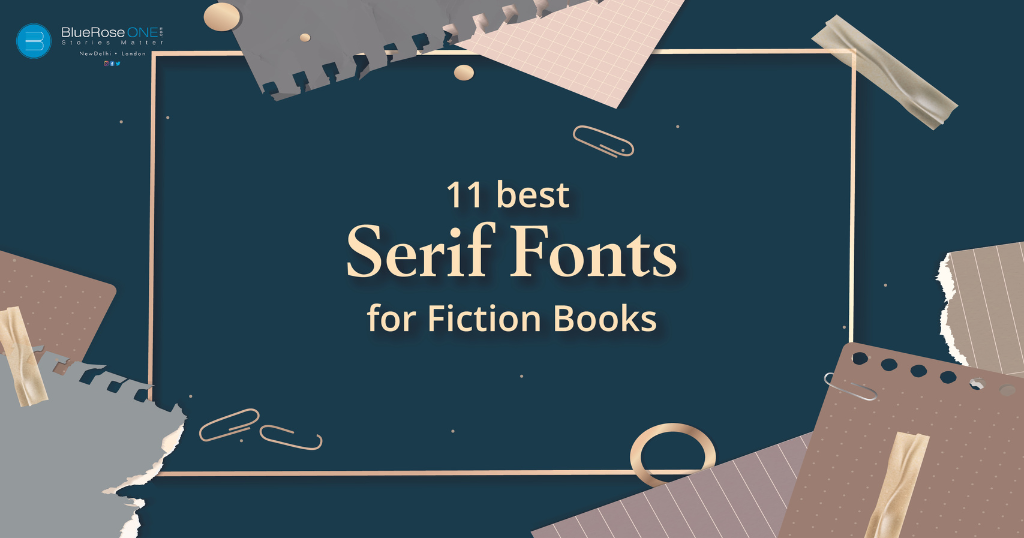
The 11 Best Serif Fonts for Fiction Books
Selecting the right font for your fiction book is a crucial aspect of book design. Serif fonts, with their timeless and classic appeal, are a popular choice for book interiors. They offer readability and elegance, enhancing the reading experience for your audience. In this blog, we’ll explore the 11 best serif fonts for fiction books, each with its unique characteristics and suitability for different genres and moods. You may also like: Literary fiction vs Genre Fiction: Definition & Examples What is a font? Before we get into the specifics of font selection, let’s clear up some terms. Experts in the field of typography distinguish between ‘typefaces’ and ‘fonts.’ Typefaces are diverse writing designs such as Times New Roman and Arial, whereas ‘fonts’ are variants in size, weight, and style within those typefaces, such as 12 pt Times New Roman bold or 14 pt Arial italic. However, for the purpose of clarity, we’ll use the term ‘font’ to refer to both the main type styles and their variants in this discussion. You may also like: List of 10 Best Proofreading Softwares to Level Up Your Writing How Do You Make the Right Font Choice for a Book? Choosing the best font for a book’s body text is sometimes a matter of personal opinion. While there are a few generally despised typefaces, most readable fonts may be regarded. Nonetheless, there are several critical aspects that any conscientious book designer should keep in mind. You may also read: What is Situational Irony? Definition, Examples and Tips for Writers In the end, choosing the correct serif font for your fiction book is critical for communicating the intended atmosphere and improving readability. When selecting a typeface, keep your target audience and novel’s genre in mind. Remember that the greatest typeface is one that is inconspicuous, allowing readers to completely immerse themselves in your tale. Whether you choose a traditional font like Times New Roman or a more beautiful one like Garamond, your font choice is critical in making your fiction book a pleasurable read.

Why BlueRoseONE the Best Book Publishers in India?
BlueRoseONE, an Indian book publishing firm and is one of the best book publishers in india, has been making waves in the literary world. They have been instrumental in making innumerable authors’ aspirations of becoming published writers a reality. Do you want to publish your literary masterpiece as an aspiring self published author in India? Perhaps you’ve already written your magnum opus and are looking for the top book publishers in the country to help you bring it to life. In either case, your search has taken you to the correct location. Read: Easy Hacks to Inspire Yourself to Write a Book and Get it Published Easily. Whether you are a new author looking for your first publishing opportunity or an experienced author looking for a new platform, BlueRoseONE should be your first stop for all things book publishing. In this detailed guide, we will go deep into the world of BlueRoseONE and investigate the aspects that set them apart as the greatest book publishers in India. Who is BlueRoseONE? (Best Book Publishers) Before we dive into the reasons that make BlueRoseONE the best book publishers in India, let’s get to know them a bit better. BlueRoseONE is a renowned book publishing company that operates in India. They offer a wide range of publishing services, catering to authors from diverse genres and backgrounds. Whether you’re an emerging writer with your first manuscript or an experienced author seeking a new publishing partner, BlueRoseONE has something to offer. The Key to Successful Book Publishing What sets BlueRoseONE apart from the rest of the publishing industry in India? The answer lies in their commitment to nurturing talent, promoting creativity, and ensuring the highest quality in book production. Here are some of the key factors that make BlueRoseONE the best book publishers in India: A Platform for All Genres Quality and Professionalism Affordable Publishing Packages Expert Guidance Wide Distribution Network Print on Demand Marketing and Promotion Self-Publishing Made Easy A Platform for All GenresBlueRoseONE believes in the power of diverse voices. They are open to publishing books in various genres, including fiction, non-fiction, romance, science fiction, fantasy, self-help, poetry, and more. This inclusivity means that authors of all backgrounds and writing styles have a chance to see their work in print. Quality and ProfessionalismWhen it comes to publishing your book, quality matters. BlueRoseONE is known for its commitment to professionalism and excellence in every step of the publishing process. From editing and proofreading to cover design and formatting, they ensure that your book is polished and ready to shine. Affordable Publishing PackagesMany aspiring authors worry about the cost of publishing their books. BlueRoseONE offers a range of affordable publishing packages to suit different budgets. This means that you don’t have to break the bank to see your work in print. Expert GuidancePublishing can be a daunting process, especially for first-time authors. BlueRoseONE provides expert guidance and support throughout the journey. They offer assistance with manuscript evaluation, editing, and marketing, ensuring that you have a strong support system every step of the way. Wide Distribution NetworkGetting your book into the hands of readers is crucial for success. BlueRoseONE has a robust distribution network that ensures your book reaches bookstores, online retailers, and libraries across India. This broad reach increases your book’s visibility and potential readership. Print on DemandIn the digital age, print on demand (POD) has become a game-changer for authors. BlueRoseONE offers POD services, which means your book is printed only when it’s ordered. This eliminates the need for large print runs and reduces waste, making it a sustainable and cost-effective choice for authors. Marketing and PromotionWriting the book is just the beginning. BlueRoseONE understands the importance of effective book marketing. They offer marketing and promotional services to help your book gain the attention it deserves. From social media campaigns to book launch events, they have you covered. Self-Publishing Made EasyIf you’re interested in self-publishing, BlueRoseONE provides user-friendly self-publishing platforms. This empowers authors to take control of their publishing journey while still benefiting from professional support. If you’re looking to publish a book in India, BlueRoseONE is your trusted partner on the journey to becoming a published author. With their commitment to quality, affordability, and author support, they have earned their reputation as the best book publishers in India. Whether you’re a novelist, non-fiction author, poet, or short story writer, BlueRoseONE is your gateway to the world of publishing. Don’t wait—start your publishing journey with BlueRoseONE today and see your literary dreams come to life. FAQs about Book Publishing: Now that we’ve explored what makes BlueRoseONE the best book publishers in India, let’s address some common questions authors may have about the publishing process: How much does it cost to publish a book? The cost of publishing a book can vary significantly depending on several factors. Traditional publishing typically doesn’t require upfront costs from authors, as the publisher covers expenses like editing, cover design, and distribution. However, it’s highly competitive, and authors may receive lower royalties. Self-publishing, on the other hand, provides authors with more control but requires some financial investment. The costs can include editing, cover design, formatting, ISBN acquisition, and marketing. The price range is wide, from a few hundred to a few thousand dollars. BlueRoseONE, a notable book publisher in India, offers tailored publishing packages to accommodate different budgets, making self-publishing more accessible. How can I submit my book to a publisher? To submit your book to a publisher like BlueRoseONE, you’ll need to follow their submission guidelines. Typically, this involves preparing a polished manuscript, a book proposal (for non-fiction), and a well-crafted query letter. The query letter should succinctly introduce your book and highlight its marketability. Ensure that your submission aligns with the publisher’s genre preferences and submission criteria. Is it profitable to publish a book? The profitability of a book depends on various factors. Successful book profitability hinges on factors such as sales volume, marketing efforts, royalties, and the expenses associated with publishing and marketing. While some authors achieve substantial profits, many writers may earn modest…
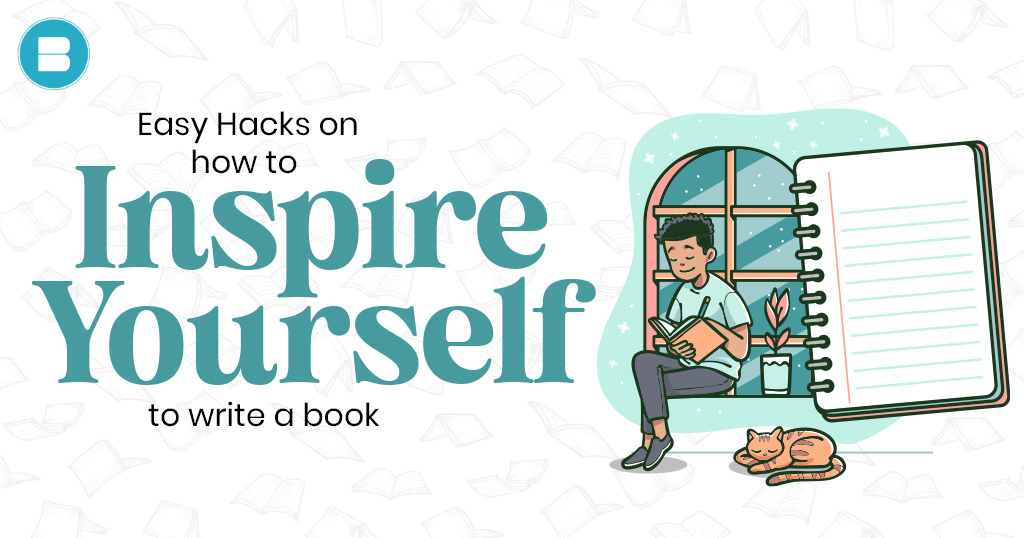
Easy Hacks to Inspire Yourself to Write a Book and Get it Published Easily
Writing a book is like embarking on an epic journey. It’s an endeavour that demands dedication, creativity, and unwavering motivation. Yet, even the most passionate writers encounter moments when their inspiration wanes and the blank page seems more daunting than ever. If you find yourself in such a predicament, fear not! Read: Everything to know about Memoir: Definition, Examples & Types In this blog, we’ll explore easy hacks to reignite your inspiration and propel you towards writing that book you’ve always dreamed of. Read: Publish Mystery Romance Novels: A Complete Fiction Genre Guide To recap, publishing a book is a great accomplishment that requires dedication and imagination. While uncertainty and writer’s block are prevalent, these simple tricks can help spark your creativity and bring you closer to your writing objectives. Remember that every writer’s path is unique, and what works best for you may differ from what works best for others. Continue to be enthusiastic, driven, and to write; the world is waiting for your narrative.
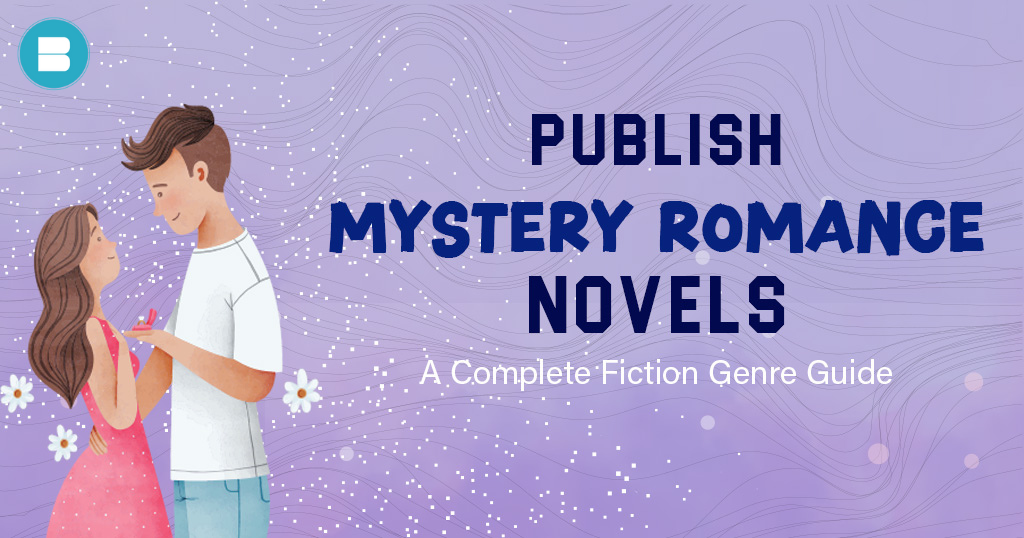
Publish Mystery Romance Novels: A Complete Fiction Genre Guide
If you’re a writer or prospective author who enjoys creating stories that combine suspense, intrigue, and love, mystery romance books might be your calling. This distinct genre combines the thrill of solving an exciting mystery with the emotional rollercoaster of a passionate relationship. In this in-depth guide, we’ll go into the realm of adult mystery romance books, present a list of the top mystery romance books, and look into the subgenre of murder mystery romance books. So, join me on a trip to discover the secrets of creating enthralling mystery romance books. You may also read: Savi Sharma Books | India’s Bestselling Inspirational Author Mystery Romance: An Intriguing Blend An intriguing literary genre, mystery romance combines the enigmatic fascination of suspenseful mysteries with the heart-pounding exhilaration of passionate love stories. The authors brilliantly build storylines that entice readers into a world where secrets and desires intertwine, producing an alluring tapestry of emotions in this intriguing combination. At its heart, mystery romance is a genre that lives on duality, with enigmas unravelling and mirroring the unfolding of love. It depicts characters who must traverse not just the complexities of their own hearts but also the complicated riddles set before them by fate. This dichotomy captivates readers, tempting them to go on a journey that reveals new levels of mystery and passion with each turn of the page. Read: Book Promotion on Amazon: Easy Ways on How to Promote your Book on Amazon. The appeal of the genre resides in its capacity to captivate readers, achieving a balance between the excitement of discovering secret facts and the pleasure of seeing the growth of love between characters. It’s a genre that enables readers to delve into the depths of human emotions, from the exciting revelation’s adrenaline rush to the emotional moments of vulnerability and connection that define a growing romance. Storytelling in the realm of mystery romance becomes a delicate dance between suspense and feeling, where the secrets of the heart and the enigmas of the plot combine, producing a narrative symphony that resonates with readers long after the last page is turned. You may also like: Book Review: Student Politics of IIT Madras by Shushant Jaswal Key Elements of Mystery Romance Before you start penning your mystery romance masterpiece, it’s crucial to understand the key elements that make this genre tick: Compelling Mystery: The mystery aspect should be engaging, with enough twists and turns to keep readers guessing. It could involve a crime, a secret, or an unsolved puzzle that the characters must unravel. Well-Developed Characters: The protagonists in a mystery romance should be relatable and likable. Readers should be emotionally invested in their journey, rooting for their love to blossom amidst the chaos of the mystery. Romantic Tension: A vital element of this genre is the building of romantic tension between the lead characters. The chemistry should sizzle, and their emotional connection should evolve organically. Setting: The choice of setting can play a significant role in creating the right atmosphere. Whether it’s a charming small town, a bustling city, or a secluded mansion, the setting should complement the mood of the story. Resolution: Ultimately, the mystery should be solved, and the love story should reach a satisfying conclusion. It’s essential to tie up loose ends and provide closure to both the mystery and the romance. You may also read: Aravind Adiga Books of All Time | BlueRoseOne The Best Mystery Romance Books Now that we’ve covered the basics, let’s explore some of the best mystery romance books that have captivated readers worldwide: “The Rosie Project” by Grace Simsion: This delightful novel follows a genetics professor with social difficulties as he embarks on a project to find a suitable life partner. Along the way, he encounters Rosie, a bartender with her own secrets. This quirky romance is filled with humour and heart. “Outlander” by Diana Gabaldon: A blend of historical fiction, time travel, and romance, “Outlander” tells the story of Claire Randall, a married nurse from 1945 who finds herself transported back in time to 1743 Scotland. Her encounters with the dashing Jamie Fraser create a passionate and suspenseful tale. “The Girl with the Dragon Tattoo” by Stieg Larsson: This gripping thriller combines a mystery surrounding a decades-old disappearance with a complex romance between journalist Mikael Blomkvist and the enigmatic Lisbeth Salander. The result is a dark and compelling story. “Big Little Lies” by Liane Moriarty: While primarily a contemporary fiction novel, “Big Little Lies” delves into the lives of several women and their secrets, including love affairs and mysteries. The storytelling is masterful, keeping readers hooked until the very end. “The Witness” by Nora Roberts: This novel revolves around a young woman who witnesses a brutal crime and must go into hiding. As she starts a new life in a small town, she forms a deep connection with the local sheriff. The book combines suspense, romance, and personal growth. You may also like: Top 10 Ebook Selling Platforms for Authors in 2025 Writing Your Mystery Romance Novel Now that you’ve been inspired by some of the best mystery romance books out there, it’s time to start crafting your own story. Here’s a step-by-step guide to help you get started: Define your mystery: Begin by outlining the central mystery or puzzle in your story. Is it a murder, a hidden treasure, a long-buried family secret, or something entirely different? Ensure that the mystery is both intriguing and solvable. Create Memorable Characters: Develop well-rounded protagonists with distinct personalities and backgrounds. Make readers care about their journey, both romantically and in solving the mystery. Build Romantic Chemistry: Craft scenes that allow your lead characters to connect on a deep emotional level. The tension and chemistry between them should be palpable. Set the stage: Choose a setting that enhances the atmosphere of your story. Whether it’s a charming seaside village or a bustling urban landscape, make it come alive for your readers. Plot Twists and Turns: Plan out the twists and turns of your mystery carefully. Keep the suspense building as your characters get closer to unravelling the truth. Resolve Both Plot Threads: As…
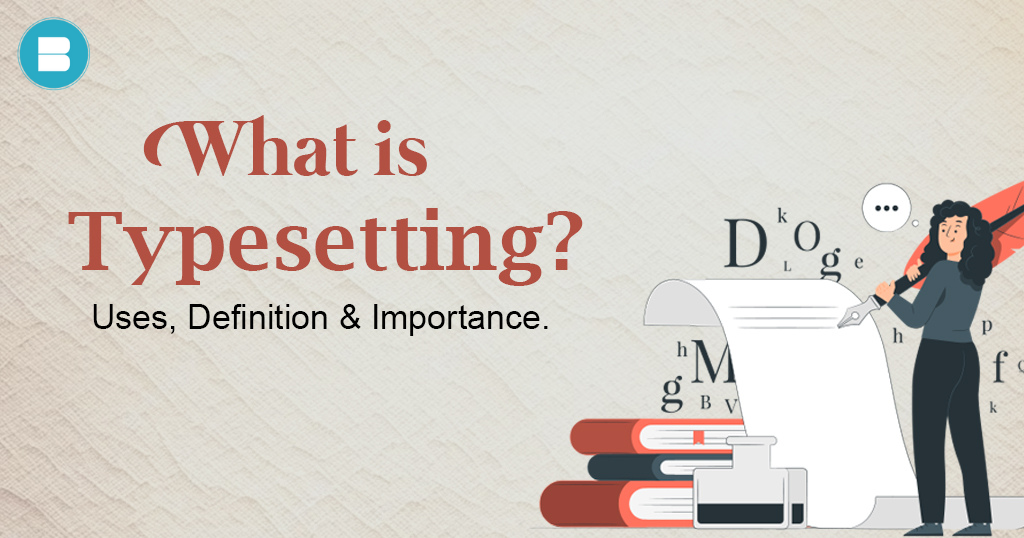
What is Typesetting: A Compelte Guide to its Uses, Definition, and Importance
In the world of publishing, design, and printing, the term “typesetting” holds a pivotal role. It’s a fundamental process that can make or break the visual appeal and readability of printed materials. But what exactly is typesetting, and why is it so important? In this comprehensive guide, we’ll delve into the intricacies of typesetting, its definition, its myriad applications, and its enduring importance in various fields. Understanding Typesetting: The Explanation Typesetting is a key technique that connects the worlds of text and design, ensuring that written material is both visually appealing and readable. Typesetting, at its foundation, is the art and science of organising text and graphical components, a process that is crucial in both print and digital media. Read: Here’s a list of 10 best tips for embarking on your creative writing journey. When we talk about typesetting, we’re talking about the precise coordination of diverse typographic components. Choosing the suitable fonts or typefaces, deciding acceptable font sizes, managing line spacing (leading), and organising the text layout on a page or screen are all part of this process. The ultimate purpose of typesetting is to provide material that engages and informs the reader while being harmonious and visually beautiful. Typesetting in Action: An Example To better grasp the concept of typesetting, let’s consider a real-world example. Imagine you’re holding a beautifully designed book. The text inside is impeccably arranged, with consistent font choices, uniform line spacing, and an elegant layout that guides your eyes effortlessly from one page to the next. This is the result of meticulous typesetting—a harmonious blend of art and science that transforms a manuscript into a reader-friendly masterpiece. The Many Uses of Typesetting Typesetting is a versatile process with a wide range of applications: Publishing: In the realm of book publishing, typesetting plays a vital role in creating visually appealing and readable books. It ensures that text and images are well-balanced, enhancing the overall reading experience. Graphic Design: Graphic designers rely on typesetting to arrange text and images in various design projects, from brochures and posters to magazines and websites. Effective typesetting is essential for conveying messages clearly and engagingly. Printing: Typesetting is crucial in the printing industry, where it is used to format newspapers, magazines, packaging materials, and marketing collateral. Proper typesetting ensures that printed materials are visually appealing and professionally presented. Digital Media: Even in the digital age, typesetting remains relevant. It is essential for creating e-books, websites, and digital publications. Good typesetting enhances readability on screens of all sizes. DTP and Typesetting Desktop publishing (DTP) and typesetting are closely intertwined processes that work harmoniously to produce visually appealing and well-structured content. DTP software, such as Adobe InDesign, plays a pivotal role in modern typesetting. These tools empower designers and typesetters to create layouts for various media, from print materials to digital publications. They offer precise control over typography, spacing, and the placement of graphic elements. DTP software is indispensable in the world of design and publishing, enabling professionals to seamlessly integrate typesetting into their creative workflows. It ensures that text and images come together cohesively to deliver a polished final product that captivates readers and viewers. The Role of Fonts in Typesetting Fonts are the fundamental elements of typesetting, influencing the visual tone and readability of a document. Typesetters carefully choose fonts that align with the content’s purpose and audience. Serif fonts, with their decorative strokes, are often preferred for traditional and formal documents, conveying a sense of elegance. In contrast, sans-serif fonts are chosen for a modern and clean aesthetic, ideal for contemporary design. The selection of fonts is a critical decision, as it significantly impacts how readers perceive and engage with the content. The artful pairing of fonts with the layout and content creates a harmonious reading experience, enhancing the overall aesthetics and effectiveness of the communication. Typesetting and Layout Effective typesetting extends beyond arranging text; it encompasses crafting the entire layout to achieve visual harmony. This includes determining margins, column widths, headers, footers, and the strategic placement of images and illustrations. A well-balanced layout ensures that readers can navigate the content with ease, finding it visually appealing and comprehensible. The layout serves as a visual roadmap, guiding readers through the material while enhancing their understanding and engagement. Typesetters and designers work together to strike a balance between textual and visual elements, resulting in a cohesive and aesthetically pleasing composition that resonates with the intended audience. You may also read: List of Top 10 Famous William Faulkner Books of All Time What are the Unit for Typesetting Precision in measurements is critical in the field of typesetting. Points and picas are often used as standardised units of measurement by typesetters. A point is 1/72 of an inch in size and is the fundamental unit for measuring font size and line spacing. This tight level of typographic control ensures that writing is intelligible and visually beautiful. Furthermore, picas, which are equivalent to 12 points, are frequently used to describe column widths, margins, and other layout elements. The use of these units enables typesetters to operate with extreme precision, ensuring that every piece on the page or screen is exactly aligned. This accuracy adds to the overall professionalism and readability of the finished output, whether it’s a printed document or a digital publication. Typesetting in Graphic Design Graphic designers rely on typesetting as a crucial tool to bring their creative concepts to life. Whether they are creating fascinating posters, aesthetically attractive websites, or engaging commercials, accurate typesetting ensures that text blends seamlessly with pictures. It is crucial to developing a unified and aesthetically attractive design. The interaction of typography and visuals is critical to effectively communicating messages. Typesetters collaborate closely with graphic designers to ensure that the text complements the visual aspects, leading to a compelling and coherent design. In graphic design, typesetting is a strong tool that combines accuracy and creativity, letting designers convey their ideas with impact and complexity. Typesetting in Publishing Typesetting has a long and illustrious history in the publishing industry. Typesetters have played an important part in bringing…
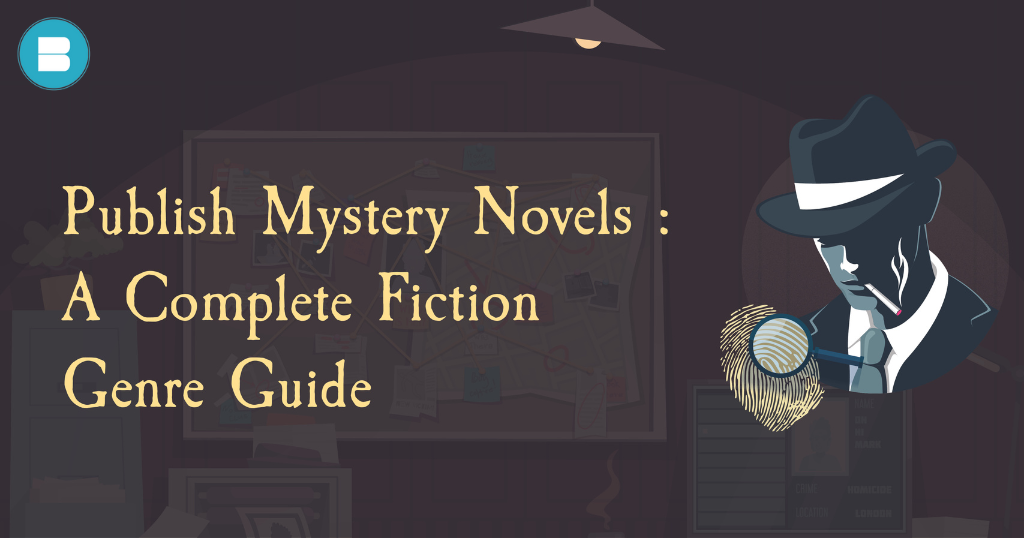
How to Publish Mystery Novels: A Complete Fiction Genre Guide
Mystery books have a timeless fascination that draws readers of all ages in. Mystery fiction is a popular genre because of the thrill of solving a hard puzzle, the excitement of discovering hidden secrets, and the tension of a well-crafted storyline. Looking to publish mystery novels? Learn how to publish a book in cost effective manner. This article will walk you through the process of publishing mystery books if you’re an aspiring mystery writer or an author wishing to get into the field of detective fiction. We’ve got you covered on everything from comprehending the subtleties of the genre to advice for successful publication. Exploring the Mystery Genre Before delving into the intricacies of publishing, it’s crucial to understand the mystery genre’s various facets. Mystery novels encompass a wide range of subgenres, each with its unique elements. Here are some popular subgenres you might encounter: Detective Stories: Classic detective stories feature a brilliant sleuth who unravels a complex case. Think of Arthur Conan Doyle’s Sherlock Holmes or Agatha Christie’s Hercule Poirot. Mystery Crime Books: These novels focus on solving crimes, often involving murder, theft, or conspiracy. Authors like Raymond Chandler and Dashiell Hammett are celebrated for their contributions to this subgenre. Supernatural Fiction: Combining elements of mystery and the supernatural, these books introduce paranormal phenomena, ghosts, or otherworldly forces into the plot. Stephen King’s works often blend mystery with the supernatural. Fantasy Fiction Books: Fantasy mysteries transport readers to other realms, where magical and mythical elements are integral to solving the central mystery. Neil Gaiman’s “Neverwhere” is an example of this subgenre. Paranormal Books: Paranormal mysteries revolve around unexplained phenomena or supernatural abilities. Authors like Charlaine Harris have popularized paranormal mysteries. Understanding Your Audience Identifying your target audience is a crucial first step in publishing a mystery novel. Mystery readers are diverse, ranging from avid fans of cozy mysteries (typically featuring amateur detectives in quaint settings) to those who prefer gritty, hard-boiled crime novels. Consider the following when defining your readership: Genre Preferences: It’s critical to identify the mystery subgenre to which your novel belongs, such as cosy mysteries, police procedurals, or psychological thrillers. Different readers have different interests within the mystery genre, so identifying your subgenre allows you to properly focus your marketing efforts and connect with the correct audience. Demographics: Identifying your target readers’ demographics, such as age groups and gender, allows you to adapt your marketing techniques. Mysteries have the ability to capture a wide spectrum of readers, from young adults to elders, and knowing your target demographic helps you develop messaging and advertising strategies that will resonate with them. Tone and Style: The tone and style of your mystery novel play a pivotal role in attracting the right readers. Whether your book has a light, humorous tone or a darker, suspenseful atmosphere, it’s essential to convey this aspect clearly in your marketing materials. This ensures that readers who appreciate your chosen tone and style are drawn to your book. Crafting a Compelling Mystery A well-constructed mystery is the heart of any successful novel in this genre. Here are some key elements to keep in mind: Engaging Protagonist: Create a relatable and compelling protagonist—whether it’s a seasoned detective, an amateur sleuth, or a supernatural entity. Intriguing Plot: Craft a plot with unexpected twists and turns that keep readers guessing until the very end. Red herrings and misdirection can add depth to your story. Well-Defined Characters: Develop memorable supporting characters, each with their motives, secrets, and quirks. The interplay of personalities can enhance the mystery. Setting: Choose a setting that complements your story. Whether it’s a cozy village, a bustling city, or a mystical realm, the setting should contribute to the atmosphere and plot. Clues and Foreshadowing: Leave breadcrumbs for readers to follow, dropping subtle hints and clues that lead to the ultimate revelation. The Writing Process Once you have a firm grasp of your genre and audience, it’s time to write your mystery novel. Here are some writing tips to help you on your journey: Outline: Start with a detailed outline that includes key plot points, character backgrounds, and the central mystery’s resolution. This roadmap will keep your story on track. Pace Yourself: Balance suspenseful moments with quieter, character-driven scenes. Effective pacing is essential to maintain reader engagement. Edit and Revise: After completing your initial draft, edit rigorously. Check for inconsistencies, plot holes, and pacing issues. Beta readers can provide valuable feedback. Build Tension: Gradually increase tension as the story unfolds. Raise the stakes for your characters, making the mystery’s resolution all the more satisfying. Navigating the Publishing Process With your mystery novel in hand, it’s time to explore publishing options. Here are three primary routes: Traditional Publishing: Submit your manuscript to literary agents and publishing houses specializing in mystery fiction. This route offers access to professional editing, marketing, and distribution resources. Self-Publishing: Self-publishing platforms like Amazon Kindle Direct Publishing (KDP) and IngramSpark allow authors to publish their books independently. You have control over all aspects of your book, from cover design to pricing. Hybrid Publishing: Some authors opt for hybrid publishing, which combines elements of traditional and self-publishing. Hybrid publishers offer various packages, allowing authors to select the services they need. Once you choose your publishing route, you’ll follow these steps: ISBN and Copyright Secure an ISBN (International Standard Book Number) for your book, as it plays a crucial role in facilitating distribution and monitoring sales. Additionally, contemplate the option of copyright registration to enhance the protection of your work. These steps are pivotal in ensuring your mystery novel’s legal and logistical readiness for publication. Book Cover Design A mystery book’s cover design is critical for attracting readers’ interest and expressing the heart of the novel. It usually includes characteristics that allude to the mystery genre, such as dark and atmospheric images, fascinating symbols, or hints. To generate suspense, the colour palette frequently incorporates deep blues, blacks, or reds. Furthermore, the cover may feature crucial characters or locales, giving readers a look inside the story. A successful mystery book cover not only attracts readers in, but also promises a fascinating and enigmatic tale within its pages, piqueing their attention. Typographical Setting A mystery book’s formatting…
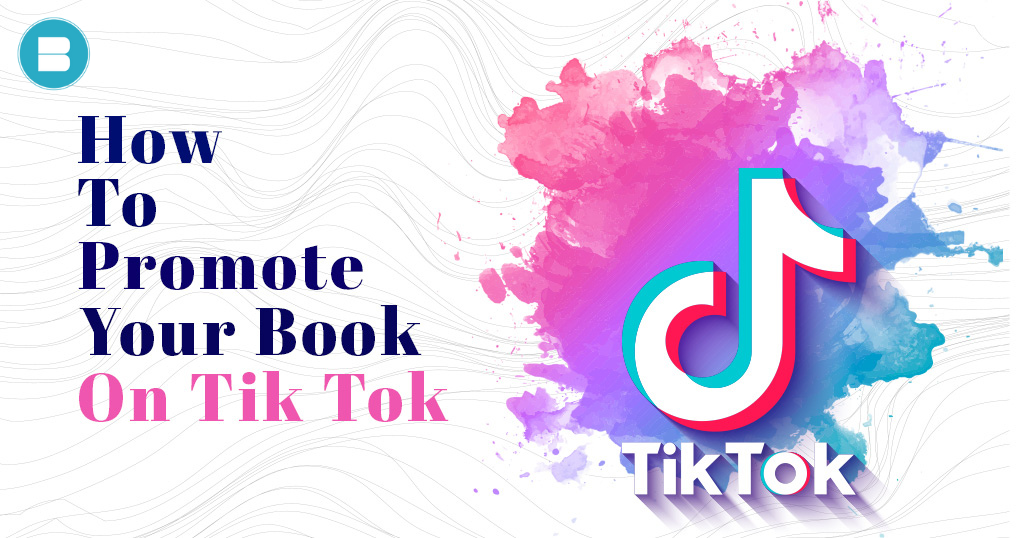
7 Steps on How to Promote Your Book on Tik-Tok
In today’s fast-paced digital world, authors have to explore innovative ways to reach their readers. TikTok, the popular short-form video platform, has emerged as an unexpected yet effective tool for book promotion. With its vast and engaged user base, TikTok offers a unique opportunity to showcase your book and connect with a diverse audience. Read: Here’s a Complete Guide on How to Publish on Google Play Books in 2023. In this blog, we’ll delve into seven essential steps to effectively promote your book on TikTok. Understand the TikTok Landscape Create Engaging TikTok Content Utilise TikTok Trends Build an Author Brand Engage with the TikTok Community Promote Your Book Authentically Use TikTok Ads Understand the TikTok Landscape: Before you begin utilising TikTok for book marketing, you must first understand the platform’s unique capabilities. TikTok is based on short video snippets that are usually set to music or audio clips. Users interact with material by liking it, commenting on it, sharing it, and following the producers. TikTok’s algorithm is meant to prioritise content based on user preferences, allowing films to spread swiftly. Understanding the landscape is critical for informing your content strategy and tailoring your approach to TikTok’s dynamic and fast-paced environment. Create Engaging TikTok Content: TikTok’s popularity is built on the creation of compelling and authentic content. Use TikTok to introduce yourself to the community and share your writing journey as an author. Provide excerpts from your book, show off your favourite writing areas, or discuss your writing method. To connect with TikTok’s audience, keep your videos brief, interesting, and relevant. Remember that TikTok thrives on originality and honesty, so show your true self in your films. Engage your audience with a fascinating narrative that keeps them returning for more. Utilise TikTok Trends: Trends and challenges drive TikTok’s lively community. Keep up with popular hashtags and challenges, particularly in the bookish community (e.g., #BookTok). Participate in these trends by adding your book or author journey to the challenge in a unique way. This not only keeps you current, but it also raises your exposure when consumers search for trending information. By capitalising on these trends, you may draw on the TikTok community’s collective passion and connect with a larger audience. Build an Author Brand: On TikTok, consistency in branding is critical. Create a distinct author brand by using the same username, profile photo, and video style. Make your identity more visible by using your book cover or author logo as your profile photo. Create a captivating profile that showcases your work and what people may anticipate from your material. Building an author brand allows consumers to more easily recognise and interact with you. It generates a unified and memorable presence that leads to your success on TikTok. You may also like: Literary Fiction vs Genre Fiction: Definition & Examples Engage with the TikTok Community: TikTok is a social platform, and interaction is two-way. Respond to comments, follow back, and acknowledge user-generated material relating to your book to engage your fans. Collaboration with other TikTok producers, particularly those in your genre, may help you expand your reach and expose your material to new viewers. Engaging with the TikTok community promotes a sense of community and aids in the development of a dedicated audience. Promote Your Book Authentically While TikTok is a promotional tool, it is critical to market your book in a genuine and relatable way. Avoid coming off as pushy or too salesy. Instead, provide personal tales about your book’s themes, characters, or writing path. TikTok consumers value honesty and a narrative that speaks to them on a personal level. You may develop a stronger connection with your audience and inspire them to investigate your work by delivering authentic and passionate material. Use TikTok Ads: Consider using TikTok advertisements to reach out to and engage a larger audience. TikTok provides a variety of ad forms, such as in-feed advertising that displays in users’ feeds, branded hashtags to promote specific campaigns, and branded effects for interactive content. Target your advertising based on user demographics, interests, and behaviours to maximise their impact. TikTok’s ad platform gives you useful options for efficiently targeting your target audience. Investing in TikTok advertisements might be a smart approach to supplementing your organic content while also increasing awareness of your book and author brand. Read: Here’s a Complete Guide on How to Publish a Coloring Book in 2023. In conclusion, TikTok offers a unique and exciting platform for authors to promote their books authentically and connect with a diverse and engaged audience. By understanding the platform, creating engaging content, and actively participating in the TikTok community, you can effectively showcase your work and take your book promotion to the next level. Embrace TikTok as a valuable tool in your author toolkit, and watch your book reach new heights of popularity and recognition.
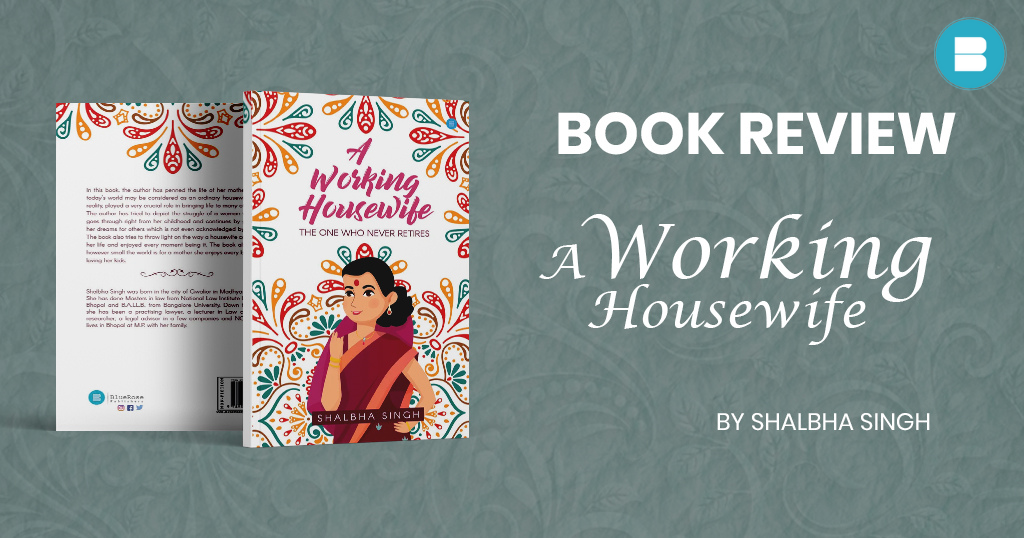
Book Review – A Working Housewife a Book by Shalbha Singh
Book – A Working Housewife Author – Shalbha Singh Blurb – In this book, the author has penned the life of her mother, who in today’s world may be considered an ordinary housewife but, in reality, played a very crucial role in bringing life to many other lives. The author has tried to depict the struggle of a woman and what she goes through right from her childhood and continues by giving up her dreams for others, which is not even acknowledged by anyone. The book also tries to shed light on the way a housewife conducted her life and enjoyed every moment of it. The book also shows that, however small the world is, for a mother, she enjoys every bit of it by loving her kids. Review – “A Working Housewife” by Shalbha Singh is a touching tribute to the unsung heroes of our society – the homemakers. Through this poignant narrative, the author beautifully encapsulates the life of her mother, who, in today’s fast-paced world, might be seen as an ordinary housewife but is, in reality, a remarkable and vital force in nurturing and shaping lives. In a world that often measures success in terms of professional achievements, this book serves as a powerful reminder that there is immense value in the work done within the four walls of a home. Shalbha Singh takes us on a heartfelt journey, painting a vivid picture of her mother’s life, struggles, and the profound impact she has had on her family and those around her. Have a Look on How to Self-Publish a Book in India. Publish Your Book with Bluerose Publishers. The book’s narrative structure weaves together various stages of the housewife’s life, from her childhood to her role as a mother and caretaker. This approach not only helps the reader understand the housewife’s journey but also underscores the continuity of selfless love and sacrifice across generations. Through the author’s eloquent storytelling, we witness the sacrifices made and dreams deferred, all for the sake of family. One of the book’s strengths is its ability to shed light on the unspoken challenges and sacrifices that homemakers make every day. The author skillfully portrays the inner world of a housewife, detailing her dreams, aspirations, and the bittersweet decisions she makes to prioritize her family. The emotional resonance of these moments is sure to strike a chord with readers who may have overlooked the depth of a homemaker’s role. Shalbha Singh’s prose is both evocative and relatable. She employs a gentle, conversational tone that makes the reader feel as though they are sitting across from her, listening to her narrate her mother’s story. This approach allows the reader to connect deeply with the characters and their experiences, fostering empathy and understanding. The book excels in portraying the housewife’s resilience and her ability to find joy in the smallest moments of life. It highlights how these women, despite facing numerous challenges, continue to cherish their roles as mothers and caretakers. Through their dedication and love, they create an atmosphere of warmth and security within their homes. In a world where many seek external validation, the book underscores the immense value in the selfless love and nurturing provided by housewives. It reminds us that being a mother and a homemaker is a career in itself, deserving of respect and recognition. Shalbha Singh’s storytelling invites readers to reflect on their own lives and relationships, prompting them to appreciate the sacrifices made by the homemakers in their own families. Learn how cost effectively you can promote your book on social media. While “A Working Housewife” is a heartwarming tribute to homemakers, it also serves as a call to action. It encourages readers to recognize and appreciate the tireless efforts of the women who work behind the scenes to maintain the fabric of our families. It prompts us to express our gratitude and acknowledge the roles these women play in our lives. In conclusion, “A Working Housewife” by Shalbha Singh is a beautifully written and emotionally charged tribute to the homemakers who often go unnoticed. Through heartfelt storytelling and vivid characterization, the author brings to life the struggles, sacrifices, and joys of her mother’s journey. This book is a poignant reminder that being a housewife is not synonymous with being ordinary; it is a role filled with love, strength, and unwavering commitment to family. Shalbha Singh’s narrative is an ode to the resilience and dedication of housewives, a celebration of their love, and a call to appreciate and honor their contributions to our lives.
